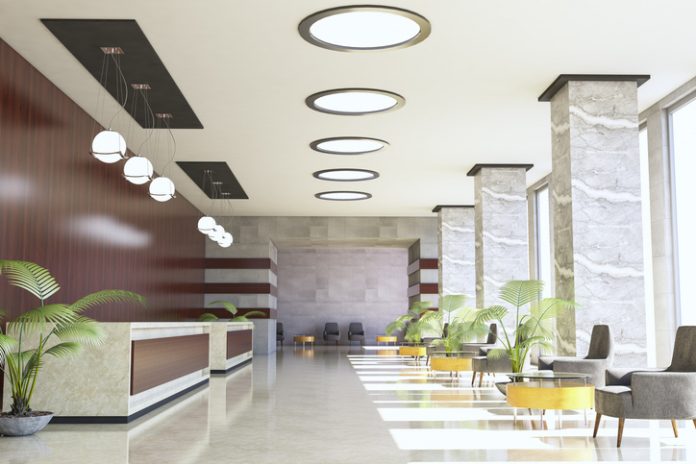
As COVID-19 continues to create operational challenges in the hotel industry, Pat Tessier, senior director of global product management at Honeywell, and Manish Sharma, chief technology officer and vice president of Honeywell Building Technologies, spoke with Carl Mayfield, executive vice president of design and construction at Park Hotels and Resorts, and William Bahnfleth, ASHRAE fellow and professor of architectural engineering at Penn State University, in a webinar to discuss designing healthy buildings and controlling air quality.
As the world begins to open up and more people return to indoor activities, building owners and managers must look closely at the technology they’re investing in to create a safe environment for those who frequent their properties. The executives explored what owners should consider and be mindful of when it comes to indoor air quality.
“Companies are in the early stages of bringing their workers back in the office, schools are opening in some compacity, and people are starting to travel again… the awareness of needing a safe business building, school, or hotel has never been higher,” said Tessier.
Mayfield maintained that hotels have a built-in advantage over other lodging options during times like these. “In the hotel space, there are quality standards, and in the age of COVID, the peace of mind that you get with a hotel stay is unparalleled,” he said. “[Hoteliers] have what I like to call the ‘belt and suspenders’ around sanitization, and can work with partners to use their technology to provide safe spaces for guests.”
To improve their indoor spaces, Bahnfleth said that hoteliers should be mindful of safety as well as the environment they are creating for guests. “In terms of engineering controls, the most important thing is measuring for both comfort and health.” He added that it’s important for engineers to recognize any harmful contaminants in the air and work to control them via ventilation, mechanical filtration, or air cleaners. “To use those methods effectively one must measure those contaminants that are of concern and have the controls to respond to them and maintain air quality that is consistent with health and productivity,” he explained.
Sharma said that Honeywell created a sensor that detects harmful contaminates and poor air quality and reports building performance on a dashboard that can be monitored. With the right ventilation and technology, he said, temperature, humidity, and other environmental factors can be managed.
When reopening hotels, Bahnfleth said that hoteliers should pay close attention to HVAC systems, ensuring that they still run as they should, and water systems, which can become stagnated after sitting unused for long periods of time. The water system must be flushed out and provide clean water flow before guests arrive.
Hoteliers should also consider updating air filters, Bahnfleth said. Sharma added that air filters with a higher grade also have higher efficacy levels in the filtration.
Overtime, Bahnfleth expects that the standards for air quality will continue to change and develop. “One thing we need do is look beyond the pandemic,” Bahnfleth said. “Right now, we’re looking very narrowly at technologies that will reduce infection risks, but there are other aspects of air quality that are important. Investing in ways to improve air quality in multiple ways is a good thing.”











